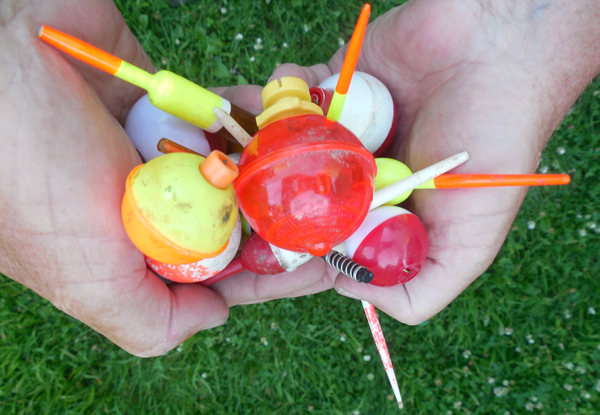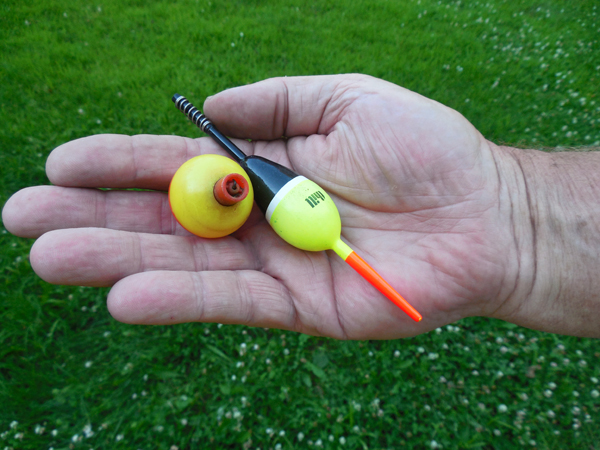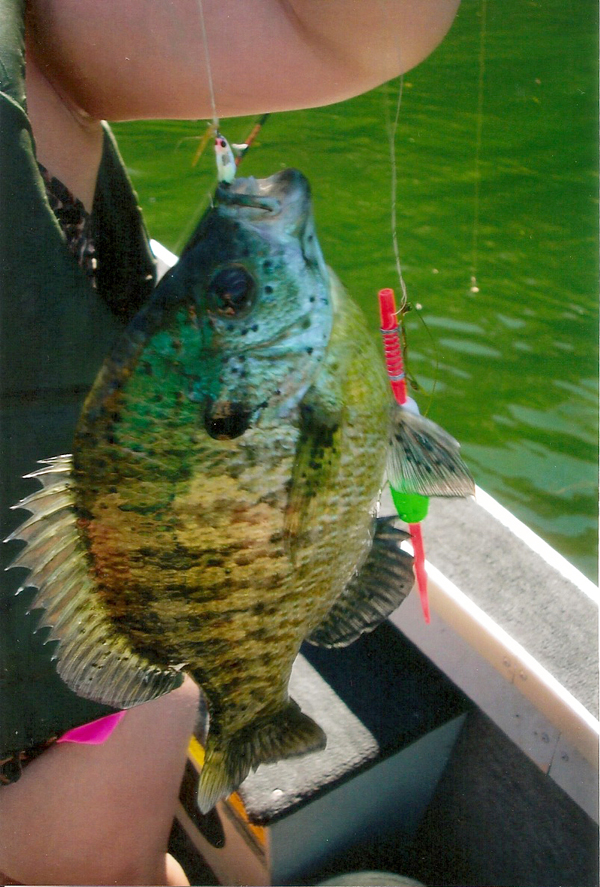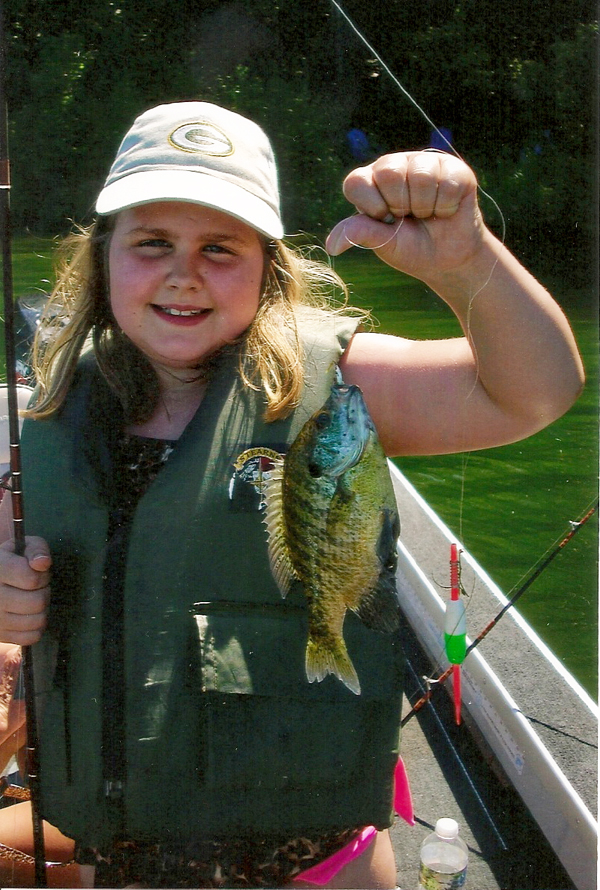THE WORLD OF BOBBERS
Mike Yurk
One of the cheapest, most overlooked, and yet most versatile pieces of fishing equipment is the bobber. Yes that is right. That cheap little plastic ball, found in any sport or bait shop just may be one of the most important pieces of fishing equipment you might have in your tackle box.
The beauty of it is that it can be found anywhere. They come packaged ten to a bag in assorted sizes for only a couple of bucks and some change. They can be found heaped in plastic baskets at the cash register in most bait shops for as little a quarter. I remember one gas station in Minnesota gave a away a bobber each time you filled up your gas tank in the first week after the fishing season opened. They are found in different sizes and shapes and colors. They used to be made from cork. Now most are made from plastic, foam or balsa wood. As a boy I made bobbers out of old wine corks.
I know this dates me but I still call them bobbers. Many fishermen today call them floats but I stick with the old name. They are still bobbers to me.

Bobbers and floats come in all sizes, shapes and colors.
If you lose one or break it, it is no big deal. Many people, like me, have bought some and found a bunch more. I have found enough of them over the years I probably will never need to buy another bobber in my lifetime. I find them in trees and floating up on the bank. It bothers me to see these discarded bobbers and I look at it as another form of littering so I pick them up wherever I find them.
For most people, bobbers just roll around the bottom of their tackle box.A bobber is nothing more than a plastic ball attached to a line where a worm or minnow dangles at the other end. Then of course many fishermen look at a bobber as only a way to tell if a fish has taken the bait.
But in reality bobbers are much more. Over the years I discovered the value of bobbers and especially their versatility. Yes, it is an indicator of a strike but if you don’t understand some of the other functions of a bobber you have missed much of its invaluable usefulness.
BOBBERS HAVE MORE USES
It also regulates the depth that you are fishing at. Once I was fishing for panfish on a river. I was fishing the bait right on the bottom by allowing the bait to fall on its own with a small split shot sinker. But I noticed as the bait fell I would see a slight jump in the line. When reeling it in right after that I found the bait was gone. The fish were suspended. I attached a bobber so I could regulate the depth my bait was at and after a bit of experimentation I found the right depth the fish were hitting and proceeded to fill my live basket.
When fishing for crappie I will use several different rods and use the bobber to regulate the depth with a different depth for each rod. I do this until I find the depth the fish are hitting and then change all the rods to the depth.
Another important function is to control the direction or drift of your bait. I once fished a pond for trout where I found trout in a small pocket in one corner near a runoff creek. I used the bobber to control the direction the bait would take by casting the bobber beyond the spot and then reeling the bobber back into the pocket. As soon as the bobber got into the pocket I got a strike. I have done the same thing just using the current or wind to drift the bobber into an area to provide a more natural presentation. If I have identified a specific spot I just cast up wind or upstream from it and let the elements move the bait into the right location.
I know I am wading into sacred waters here but fly fishermen have been using bobbers for years. Those who fish nymphs use what is called a strike indicator to keep their flies drifting at a certain depth and to indicate when they get a strike. I have used small foam strike indicators and they look like bobbers to me.

Both the round and stick bobber have its place. Learning how to fish them will put more fish on the stringer.
Bobbers can be an invaluable aid for bait fisherman on trout streams. A bobber placed a foot or two above the bait can then be used with the current to drift the bait under over hanging brush and trees which otherwise be impossible to reach with a normal cast.
BOBBERS WITH FRAGILE AND LIGHT BAITS
Minnows are the most fragile of live bait to cast. The bobber gives the weight to cast them without the jarring which would normally throw the minnow off the hook. Once I get the minnow out, the bobber then allows me the opportunity to retrieve the minnow just like it was another lure. This technique has been deadly on crappie.
The bobber also allows casting of light lures that normally would never be used with a spinning rod. When my son was young, we fished a pond for bluegills. I used a fly rod with small sponge bugs. My son was too young to use a fly rod so I put the fly on his line and attached a bobber about three feet above it to give him the weight he needed to cast it with his spincasting outfit. I have used this technique myself. I was fishing a pond for bass. All I had with me was a spinning rod. The bass weren’t hitting but I could see bluegill in the shallow water. I found a couple of flies in my tackle box and a bobber. I attached the fly to my line with the bobber for weight to cast and I quickly forgot about the bass as I started catching bluegills.
Bobbers are a great tool to use with jigs as well. They allow you the opportunity to fish a jig and to control its depth and drift. It works well on white bass and crappie and I have found it to be especially deadly on trout. Again, when my son was young I took him for his first opening day of trout fishing. We fished a pond that allowed only single hook artificial lures. I was using a spinner with a single hook. My son’s attention span at that time was too short to use a spinner. He would cast it out and then start to retrieve but wouldn’t retrieve fast enough or consistently enough to keep the spinner from hanging up on the bottom. I decided to let him use a crappie jig with a bobber. On opening day he caught his limit of trout within the first two hours after dawn and, in fact, caught his limit before I did. If he lost concentration for a few moments his bait stayed right where it was and wouldn’t sink and hang up on the bottom.
SMALLER BOBBERS ARE BETTER
One of the principal rules of thumb with fishing with bobbers is to use the smallest possible bobber. Many fish such as panfish and walleyes are noted for light strikes. The smaller bobbers will register light strikes better and present less resistance which is especially important for finicky fish. Over the years I have seen way too many fishermen using too big a bobber on panfish. Smaller bobbers will help catch more fish.

The stick bobber is sensitive to light strikes which is helpful when fishing panfish.
Most bobbers have a spring with a small hook that attaches to the line. But slip bobbers allow the line to slip right through the bobber so it can be used in deeper water. When the line is reeled up the bobber slips down the line to the where the bait or sinker is at. When I was fishing in the Boundary Waters in far northern Minnesota I would my canoe to an overhanging tree in the last couple of hours. I was on a rocky point that quickly dropped into deeper water. I was using leeches under a slip bobber and cast out into the deeper water. In some cases my bait was near the bottom in fifteen feet of water. I caught my limit of walleyes on most nights.
Even with something as simple as a bobber there are new improvements. One of the more advanced improvements over the years are bobbers with lights for night fishermen. These bobbers will eliminate the days of squinting into the dark with a flashlight, trying to see if the bobber is just floating around out there drifting with the current or being dragged off by a fish.
Now bobbers come in more than just the round ones. Thin pencil type bobbers are especially productive for panfish. They have considerably less drag or resistance than round bobbers making it easier to register strikes from light striking fish. Thill has a wide variety of these types of float/bobbers.
Also a number of both round and stick bobbers/floats come with a small lead ring around them. This gives them more weight when casting, which allows the fishermen to cast farther distance. I think is also is helpful when casting delicate bait such as minnows. I have been using these types of bobber for several years for crappie fishing and they work great.
ICE FISHING FLOATS
Slip bobbers are especially effective while ice fishing, especially when you are in deeper water. When I ice fish Lake of the Woods we normally are fishing anywhere from fifteen to thirty feet of water so a slip bobber is critical then. Normally I use a number four Stealth float by Thill for most of my ice fishing. The line runs through the bottom of the float, under the water so it never freezes up.
Some years ago a new ice fishing bobber hit the market. It is a yellow foam bobber made especially for ice fishing, shaped and about the size of a of a cigarette, simply called an Ice Fishing Foam Bobber. It has little resistance when a fish strikes and is very sensitive to hits. As well, like the Stealth float the line runs through a small slit in the plastic base which is below the water so it doesn’t freeze up. I have used it over the years and it is very effective.
This new foam bobber makes you wonder what new and improved versions of floats/bobbers are currently being developed. They certainly have come a long way from the days when I used wine corks for bobbers.

Bobbers help young and old fishermen catch more fish.
The world of bobbers is not as simple as most people believe. It is one of the most versatile pieces of equipment you have in your tackle box and understanding bobbers will help you catch more fish.
Editors Note: Mike Yurk’s column is sponsored by Warner’s Dock in New Richmond, Wisconsin. Warner’s Dock is the premier marine dealer in northwestern Wisconsin. They have a complete supply of new and used boats, motors, and trailers as well as other marine supplies plus a complete maintenance staff for all your boating needs. They can be contacted through their website at www.warnersdock.com or by telephone at 1-888-222-3625.











